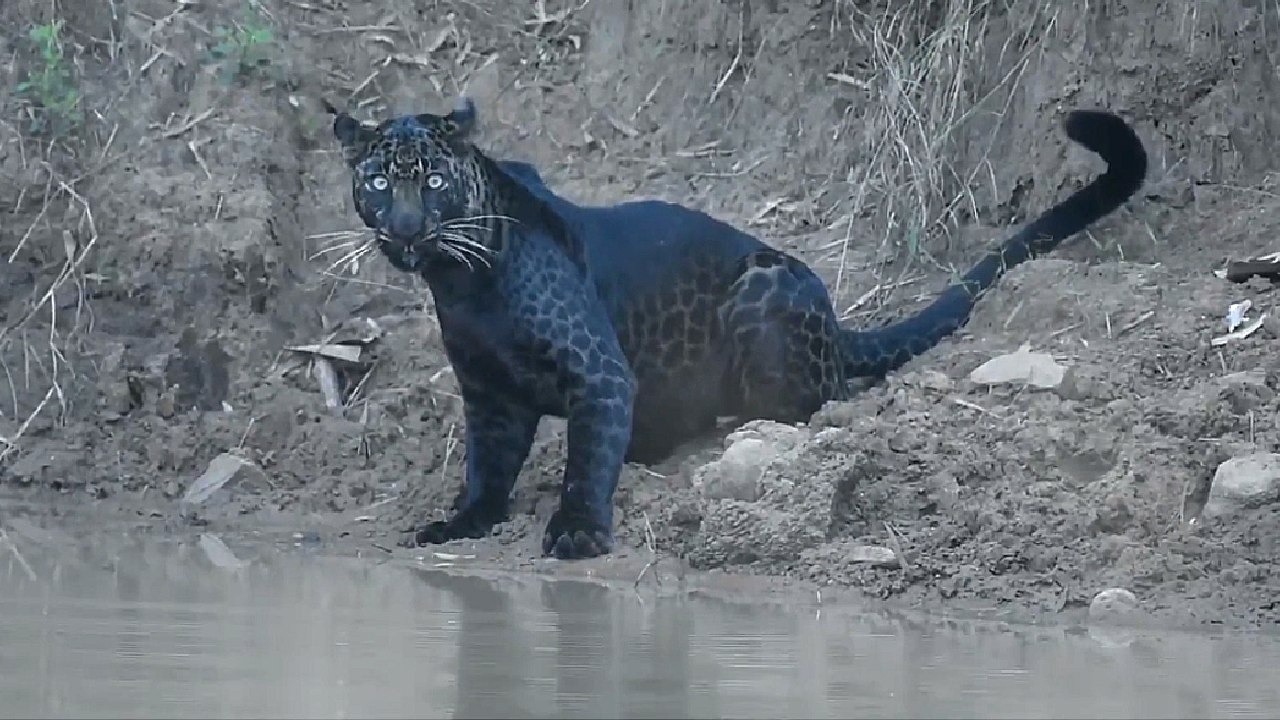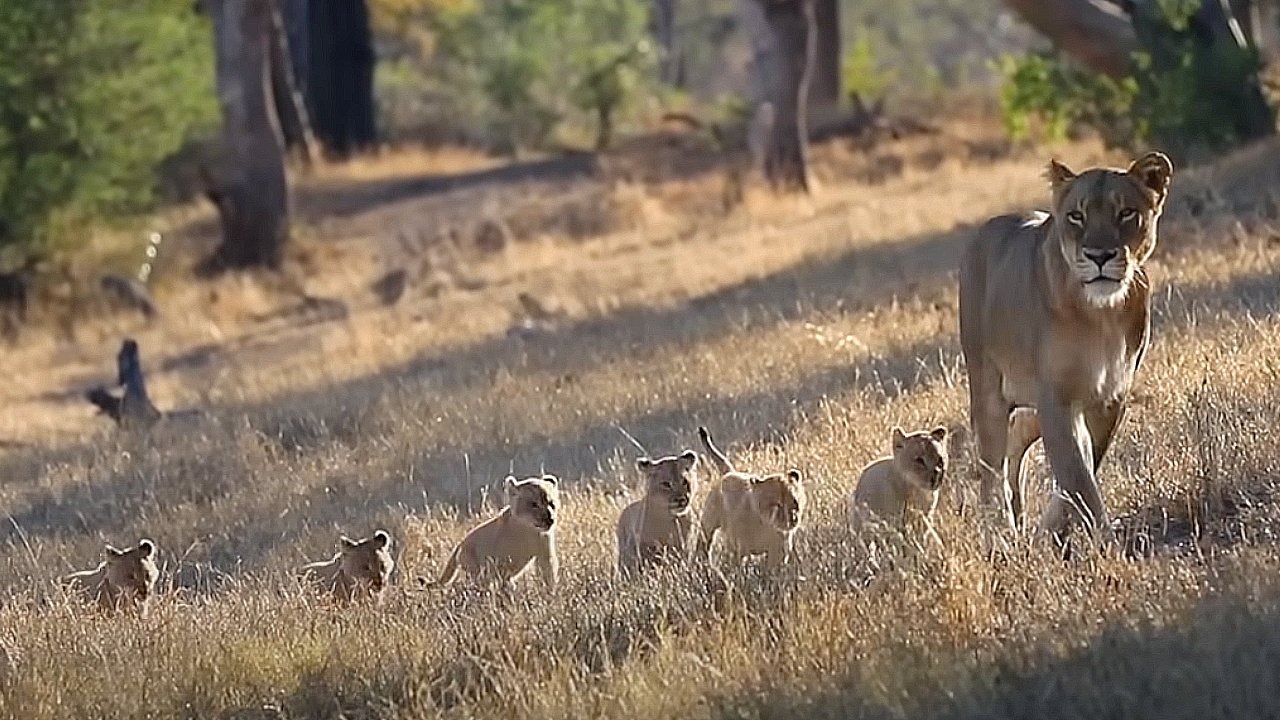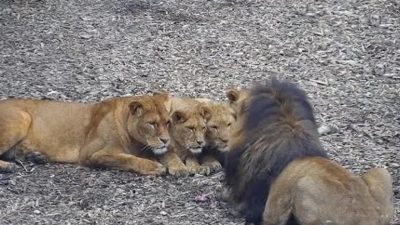A dead 15ft minke whale has been found washed up on the Suffolk coast with experts from the Natural History Museum and the Zoological Society of London unable to travel to inspect the remains due to Covid-19 restrictions.
The sea creature was spotted by a member of the public at around 7.30am yesterday on Lowestoft South Beach in north Suffolk.
Coastguards were alerted and scrambled to the scene, but the whale had sadly died by the time they arrived.
Marine officers said that, while the beaching is a ‘great interest to people’, locals should keep their dogs on a lead if visiting the beach to avoid any pets damaging the carcass.
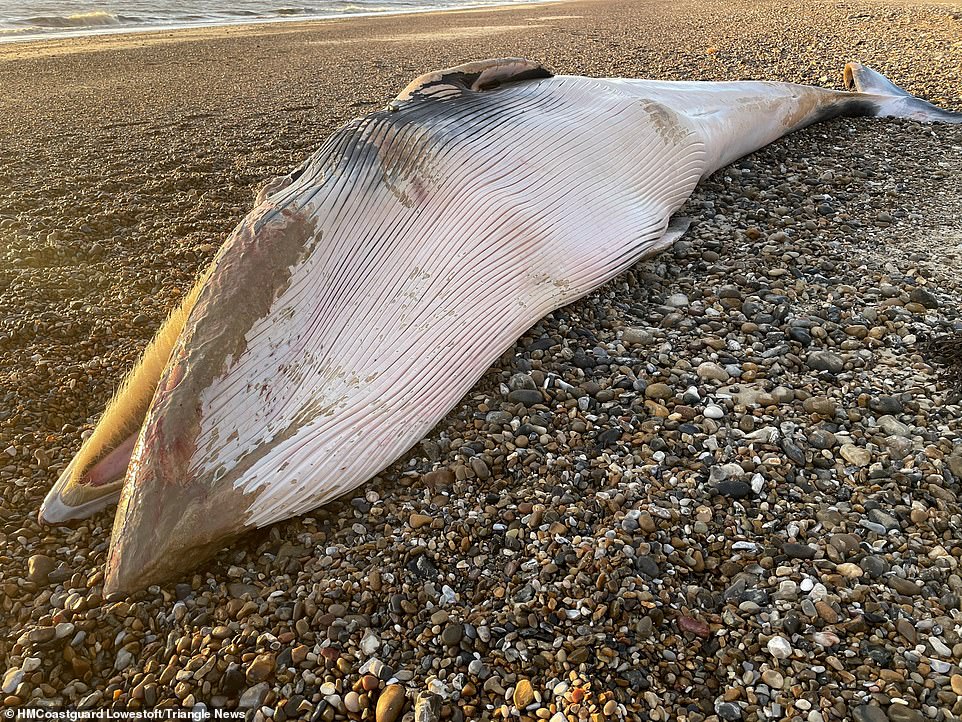
The 15ft minke whale pictured washed up on Lowestoft South Beach in north Suffolk. The whale was spotted by a member of the public at around 7.30am yesterday and alerted the coastguard, but it had sadly died by the time they had arrived
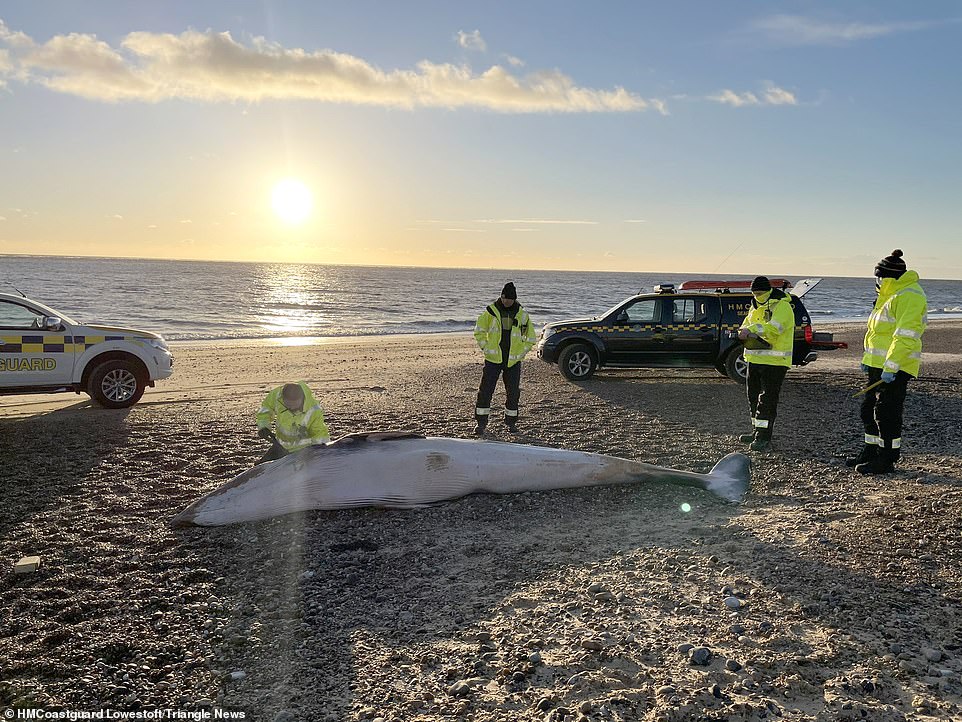
Coastguard officers seen inspecting the minke whale in Suffolk. Experts from the Natural History Museum and the Zoological Society of London have been prevented from travelling to inspect the remains due to the Covid pandemic
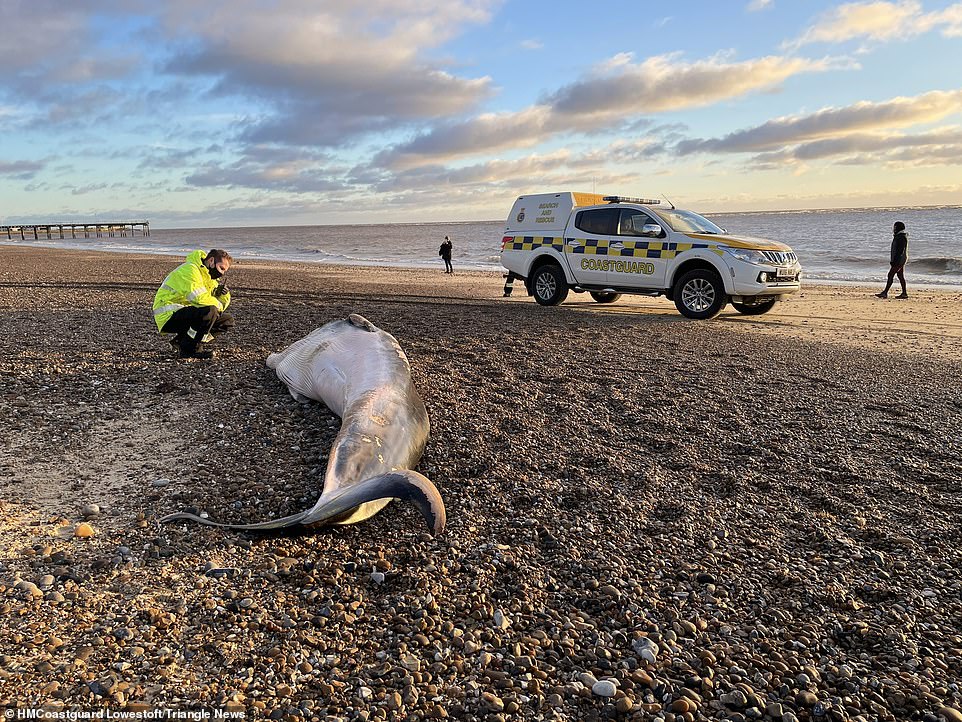
The minke whale pictured washed up on a beach in Suffolk. Marine officers said that, while the beaching is a ‘great interest to people’, locals should keep their dogs on a lead if visiting the beach to avoid any pets damaging the carcass
Minke whales – facts and figures
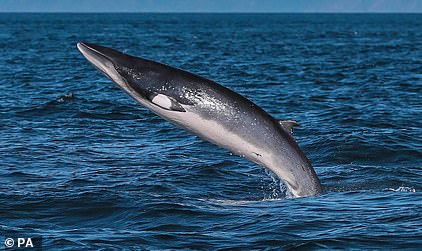
Minke whales are solitary animals, although they can sometimes be found in groups of two to three (file photo)
Minke whales, often dubbed ‘Stinky Minkes’ due to their smelly breath, are the most abundant of the baleen whales found in British waters.
The sea creatures can converse over long distances and are able to make noises as loud as 150 decibels – the equivalent to a jet plane taking off.
They can be regularly seen off the coast of Ireland, Scotland and north east England.
The mammal is around 7-9m in length, weighing at 5-10 tons with a lifespan of 40-50 years.
They seasonally migrate from tropical breeding grounds up to polar feeding grounds in the Artic and North Seas.
Their worldwide population is estimated to be between 500,000 and 1 million.
The species’ conservation status is listed as ‘considered of least concern’ on the IUCN Red List of Species and a ‘priority’ species on the UK Post-2010 Biodiversity Framework.
Minke whales are solitary animals, although they can sometimes be found in groups of two to three.
Source: The Wildlife Trusts
HM Coastguard Lowestoft said: ‘While on scene, lots of members of the public with dogs visited the site.
‘While we understand that the whale is a great interest to people, please keep your dogs on a lead around the whale.
‘The Receiver of Wreck informed the Natural History Museum, who sadly are unable to come to the site, due to Covid-19 restrictions.
‘The local council have been informed and arrangements are being made to remove the whale from the beach.’
Despite being the most common whale to be found in the North Sea, sightings of minkes are still very rare.
Social media users reacted to the harrowing images, with one commenting: ‘That’s so sad’, and another writing: ‘Poor thing.’
It comes amid a rise in whale beachings across the British Isles over the last year, but the reasons are not clear.
Dutch whale researcher Jeroen Hoekendijk believes the strandings are a direct consequence of military sonar use, and says the current beachings are ‘the tip of the iceberg’.
It is thought the sonar scares the whales into surfacing too quickly causing narcosis.
A number of scientific papers have shown a link between military sonar, seismic surveys for oil and a spate of whale strandings.
One from February last year suggested anti-submarine ‘mid-frequency’ active sonar was causing the death of beaked whales.
It is believed the sonar scares the mammals into surfacing too quickly causing narcosis – a condition also suffered by human divers rising from the deep too fast.
A range of sightings from the North Sea to the Faroe Islands – including some found on beaches dead and others spotted in unusual locations like the Firth of Clyde has also led researchers to believe something unusual is happening.
Minke whales can reach up to nine metres in length and often swim together in small feeding groups. The creatures feast on krill and fish, and are known as gulp feeders.
They take huge gulps from schools of fish to catch vast numbers of them in one bite for their dinner.
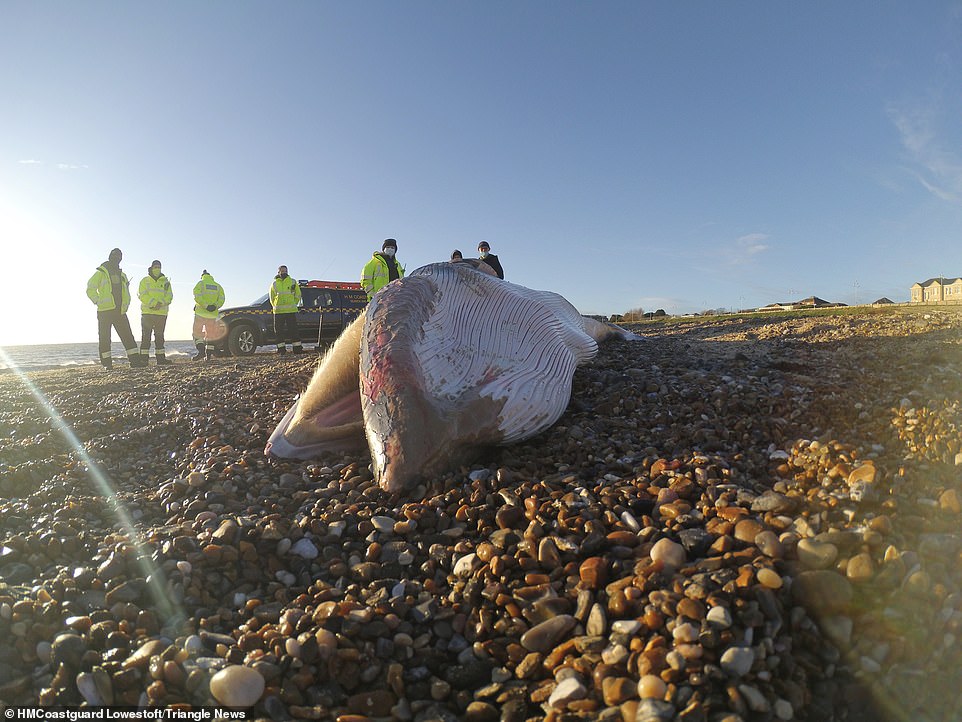
The minke whale pictured from ground level washed up on a beach in Suffolk, with coastguard officers seen standing in the background. It comes amid a rise in whale beachings across the British Isles over the last year
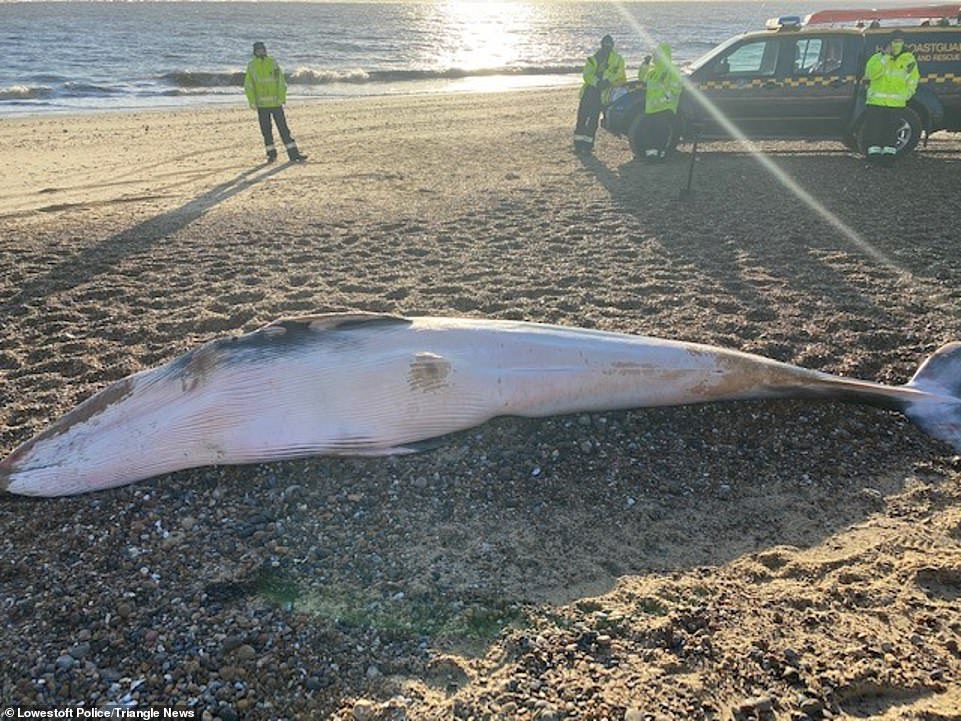
HM Coastguard Lowestoft said: The local council have been informed and arrangements are being made to remove the whale from the beach.’ Social media users also reacted to the harrowing images, with one saying: ‘Poor thing’
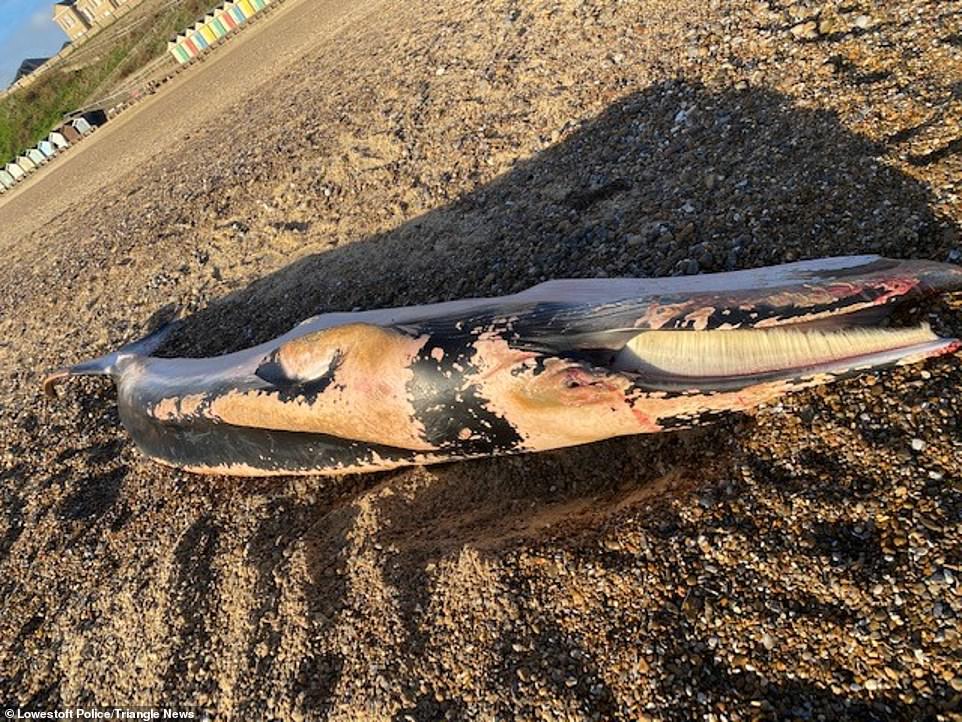
The minke whale’s worldwide population is estimated to be between 500,000 and 1million. A number of scientific papers have shown a link between military sonar, seismic surveys for oil and a spate of whale strandings


